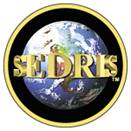
Information technology —
Computer graphics and image processing —
SEDRIS —
Part 1: Functional specification

Information technology —
Computer graphics and image processing —
SEDRIS —
Part 1: Functional specification
This part of ISO/IEC 18023 addresses the concepts, structure, syntax and semantics for the representation and interchange of environmental data. It specifies:
The technologies specified in this part of ISO/IEC 18023 apply to the four domains of environmental data representation:
The terrain domain includes data about the characteristics of a planetary surface with both physical and administrative boundaries. These data describe terrain phenomena (e.g., flooding, volcanic eruption, and tectonics) as well as natural features (e.g., mountains, canyons, and rivers) and artificial features (e.g., buildings, roads, and vehicles). The ocean domain includes data about the characteristics of a planetary ocean with both physical and administrative boundaries. These data describe oceanographic phenomena including temperature and pressure as well as natural features (e.g., waves, currents, and eddies) and artificial features such (e.g., buoys, drilling platforms, and vessels). The atmosphere domain includes data about the characteristics of a planetary atmosphere with both physical and administrative boundaries. These data describe atmospheric phenomena (e.g., winds, temperature, and pressure) as well as natural features (e.g., tornados, fronts, and fog banks) and artificial features (e.g., rockets and aircraft). The space domain includes data about the characteristics of space, and its physical boundaries. These data describe space phenomena (e.g., radiation, and space weather) as well as natural features (e.g. solar wind, radiation belts, and comets) and artificial features (e.g., satellites and spacecraft). Each of these domains may also include topological, rule-based, and other constraints that ensure correct data are available for applications that rely on automatically generated behaviours when interacting with environmental data.
This part of ISO/IEC 18023 may be applied to any application or system that represents and/or interchanges environmental data including, but not limited to, the following areas: